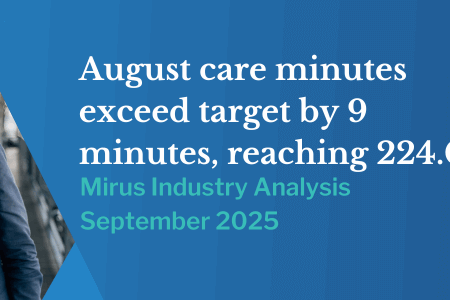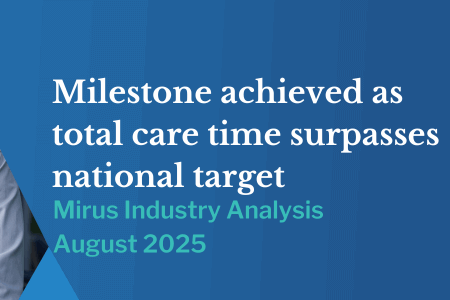Exclusive insights on Care Time Assessments from the Department of Health and Aged Care
July 8, 2024 | AN-ACC

Recently, our Executive leadership met with the Department of Health and Aged Care and discussed the Care Time Assessment Audits focusing on the data Providers include in their QFR submissions. The Department of Health and Aged Care is committed to improving the quality and accuracy of care time reporting within the aged care sector. As part of this commitment, the Department will provide detailed feedback in August 2024 based on the outcomes of the care time reporting assessments program. This blog explores the key themes identified so far, as provided exclusively to us from the Department, and offers guidance on how aged care providers can enhance their reporting practices.
The importance of accurate Care Time reporting
Accurate care time reporting is essential for several reasons. Firstly, it ensures that care facilities are meeting their care minute responsibilities, which are critical for providing high-quality care to residents. Secondly, it enables the appropriate allocation of funding and resources, ensuring that facilities have the support they need to maintain their operations. Finally, accurate reporting helps to build trust and transparency with stakeholders, including residents, their families, and regulatory bodies.
Common themes in Care Time reporting errors
The Department of Health and Aged Care has identified several common themes in care time reporting errors that need to be addressed to improve accuracy:
- Incorrect attribution of staff to QFR categories
One of the most prevalent issues is the incorrect attribution of staff to the Quality Funding Reporting (QFR) categories. This misattribution often leads to an overstated performance against care minute responsibilities. Ensuring that staff are correctly categorised is essential for accurate reporting.
- Including non-direct care work in direct care fields
Another common error is the inclusion of non-direct care work time in the direct care fields of the QFR. Non-direct care activities, such as administrative tasks, should not be counted as direct care time. Accurate differentiation between direct and non-direct care activities is crucial for compliance and accurate reporting.
- Double-counting shifts
Misattributing additional allowances as worked time can result in double-counting shifts. This practice inflates the reported care time, leading to discrepancies in the data. It is important to clearly distinguish between actual worked time and additional allowances to avoid this error.
- Reporting based on payroll periods
Some facilities report care time based on the nearest payroll periods rather than the actual days the report pertains to. This practice can cause inaccuracies in the reported data, as it does not reflect the true distribution of care time. Reporting should align with the specific reporting period to ensure accuracy.
- Exclusion of Agency staff
Failing to include agency staff in care time reporting is another significant issue. Agency staff play a critical role in delivering care, and their time must be accurately reported to reflect the true care provided. Including all staff, regardless of their employment status, is essential for comprehensive reporting.
- Omission of Registered Nurse absences
Finally, failing to report registered nurse absences can lead to an overestimation of care time. Registered nurses are pivotal in delivering care, and any absences should be accurately recorded to ensure that the reported care time is reflective of the actual care provided.
Steps to improve Care Time reporting accuracy
To address these common issues and enhance the accuracy of care time reporting, aged care providers should consider the following steps:
- Training and education: Providing thorough training for staff on the correct attribution of care time and the importance of accurate reporting.
- Clear guidelines: Establishing clear guidelines and protocols for differentiating between direct and non-direct care activities.
- Accurate data entry: Implementing robust data entry practices to prevent double-counting and ensure that reporting aligns with the correct periods.
- Monitoring and review: Regularly monitoring and reviewing care time reports to identify and correct any discrepancies.
The upcoming detailed communication from the Department of Health and Aged Care in August 2024 will provide valuable insights into improving the accuracy of care time reporting. By addressing the common themes identified and implementing best practices, providers can enhance their reporting accuracy, ensuring that they meet their care minute responsibilities and maintain high standards of care.
If you’d like to get support with your care minute policy, request a call back below and someone from our team will be in touch.


